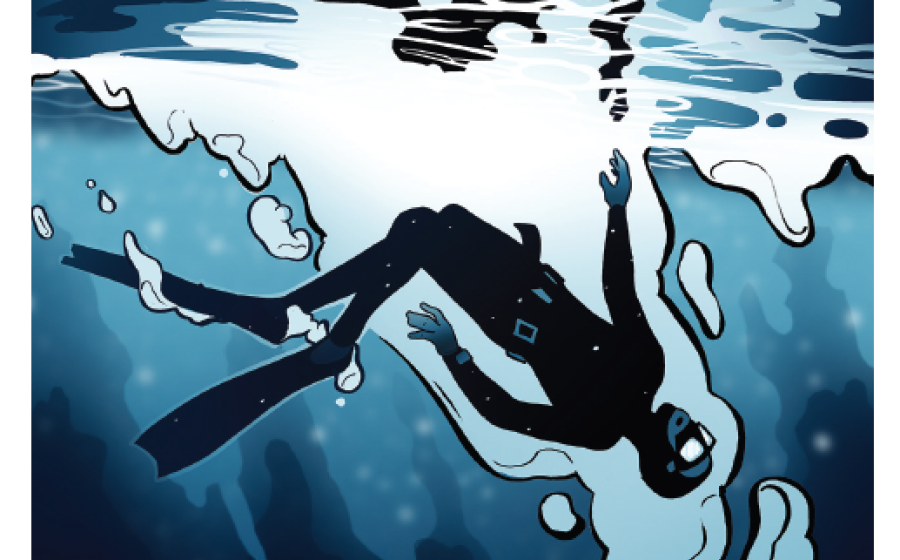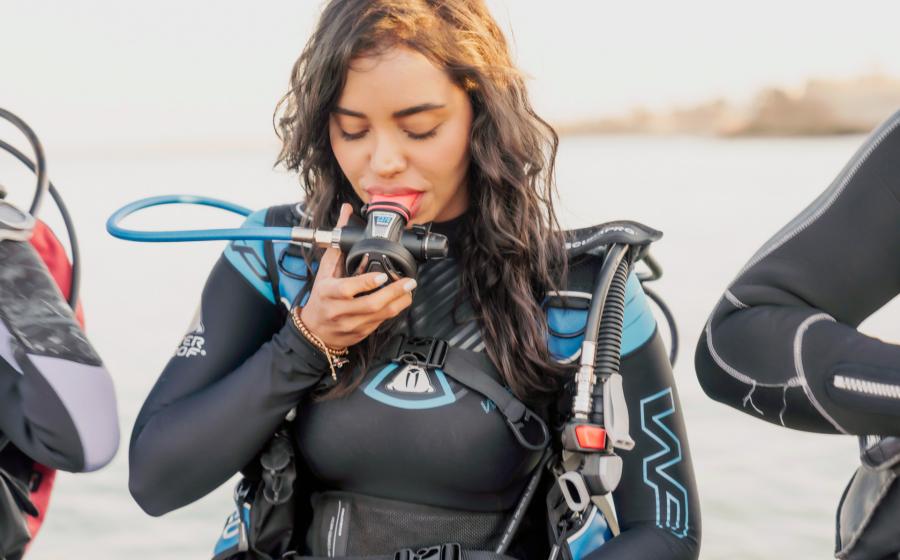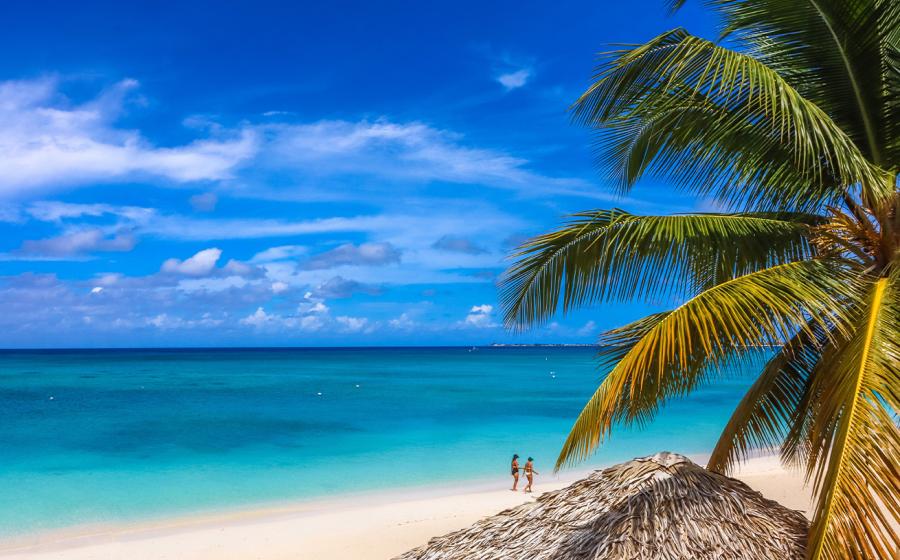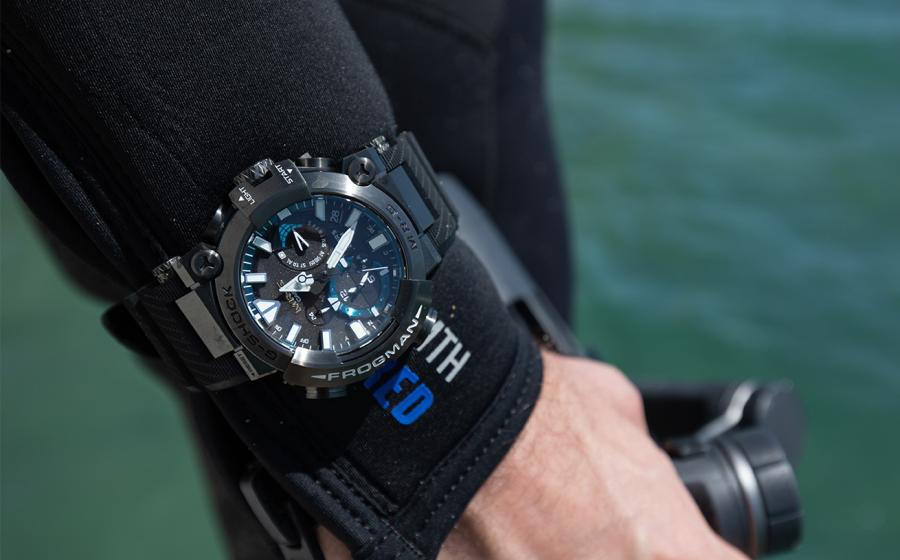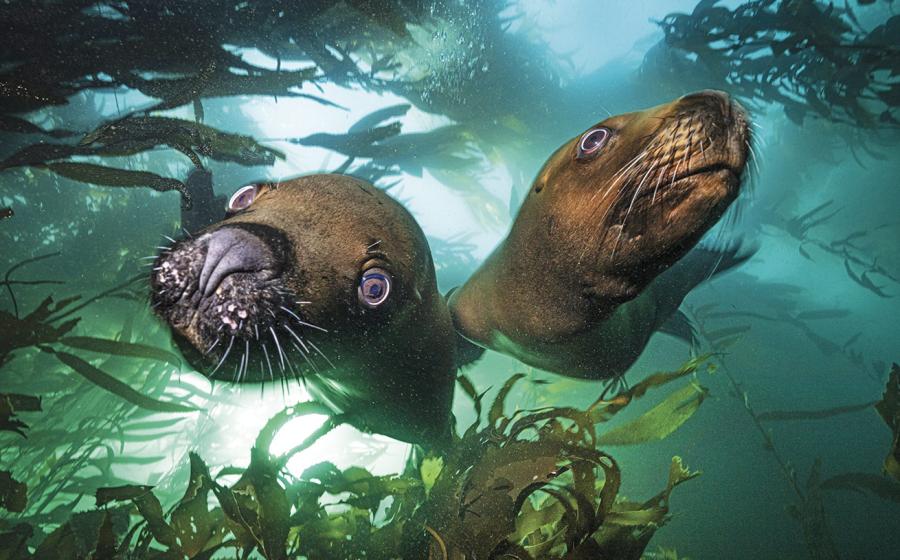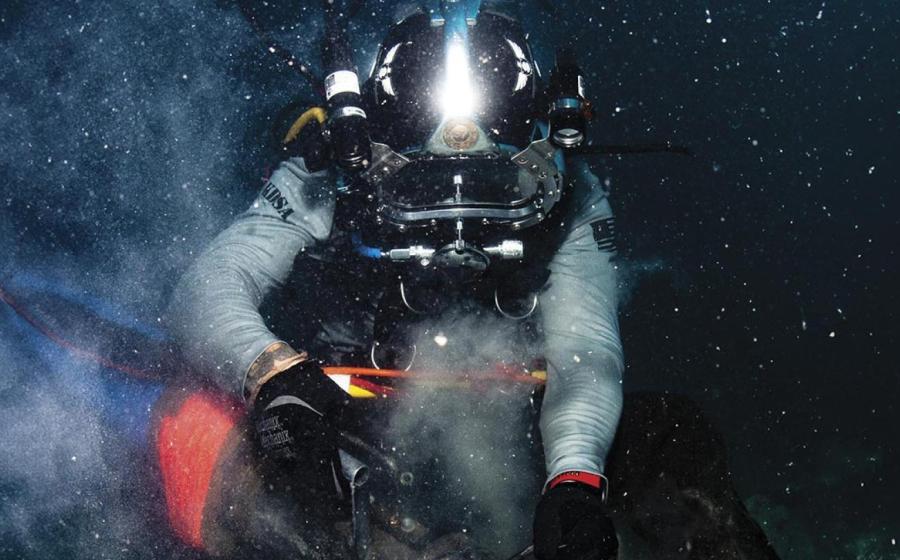Video: California Kelp Forests
Backscatter pro client Howard Hall shares his stunning footage of giant kelp forests and his top shooting techniques.
Howard Hall Interview Q/A with Backscatter owner Berkley White:
Q: We consider your 1990 film Seasons of the Sea the greatest film ever made on California. We understand you've been reshooting the sequences in 4K. Please tell us about this project. Will we get a theatrical debut soon?
Thank you for the compliment. I love the film. It really started my career as a filmmaker. I didn’t know it was special at the time. It was simply in my nature to make that kind of film. My timing was excellent. But that was almost 25 years ago now. Seasons was originally shot on 16mm film then transferred to one-inch videotape. By today’s standards the image quality is horrible. I don’t want the film to simply die. So I converted the standard definition video version of the film to HD and, during the last few years, I have been slowly replacing the standard definition shots with more recently captured HD shots. The sound track remains unchanged, but now many of the shots are of contemporary quality. I’ll never replace all of the shots since some sequences simply cannot be reproduced today. But I’ll keep trying. It remains a work in progress though the version I have now is probably about as good as it is going to get.
I’m not sure what I will do with the film. I showed it at Beneath the Sea last year and we had a screening here in San Diego. I may sell it to a broadcaster or Internet channel. Or I may just post it online at some point.
Q: You're known for going to extremes to capture unique animal behavior. Which sequence was the most challenging in your California Dreaming edit?
The blue whale sequence. I shot the first underwater feeding shots of blue whales in 1988 for Seasons of the Sea. It was an amazing year. I’ve been trying to capture a blue whale sequence that is as good since I switched to HD video (and now 4K video). The shots of blue whales in California Dreaming took decades to capture. But since making California Dreaming, I have improved the sequence even more. The version I have in the most recent Seasons of the Sea is pretty amazing. But it has taken 25 years.
Q: When you’re not shooting 3D IMAX, what is your primary underwater camera system?
I’m shooting the RED Epic camera and capturing most of my video in 5K. I use a Gates RED Epic Housing. For wide angle I use the Canon 8-15mm Fisheye and Canon 16-35mm lenses. I use the Sigma 17-70mm lens for macro and medium wide subjects.
Q: Could you recommend a low cost camera system for a budding cinematographer?
There are amazing choices out there now. I would definitely capture in 4K (or UHD). By the time you read this, HD will probably be extinct and the next TV you buy will certainly be UHD. Sony makes the FDR-AX100 which is a tiny little camcorder that captures UHD. John Ellerbrock showed me some wonderful footage he captured using the Gates AX100 housing. I’ve also seen some nice 4K footage captured with the Panasonic GH4. I’ve seen some 4K images captured by you with the Canon 1Dc that are exceptional. The 1Dc is not a cheap camera and may be ergonomically awkward underwater, but it captures beautiful images.
Q: Could you please share a few shooting tips for aspiring filmmakers?
In my view, there are three kinds of films: feature films, music videos, and television commercials. What style do you want to emulate? Personally, I like feature films. Watch a good one and you will notice very few zooms, very few unjustified pans, only an occasional dissolve, and no wipes or fancy transitions. Feature directors want to avoid calling attention to the camera work to keep the audience captured by the story. Seasons of the Sea was captured in feature film style as are all good documentaries.
Music videos are music compositions supported by video. The music comes first and you cut the image to the music. California Dreaming is a music video. The music is an original composition by Shie Rozow. It’s excellent. Most people who make underwater music videos don’t have access to high quality rights free music or don’t understand the critical value to quality music. So they cut their beautiful images to awful music. The result is usually horrible. Once people understand that the music is primary, they often do better.
No one wants to watch a TV commercial. To keep the audience from getting up and going to the refrigerator, directors use “flash and trash.” This style includes lots of video graphics, weird and flashy transitions, and abnormal color effects. Many novice filmmakers end up making “TV commercials” out of their underwater footage because they think the graphics and transitions available in their editing program are new and cool.
Oh, yeah. You said shooting tips, not filmmaking tips. One: hold the camera still. The slightest wobble ruins it for me. Two: white balance 10 feet shallower than shooting depth when capturing in available light. Or white balance on the close foreground when shooting with lights. Three: hold the camera still.
Q: You’re not only known as one of the worlds greatest cinematographers, but as a serious diving athlete. What diving skills do you find essential for filmmaking?
I don’t do anything special when I’m on scuba. I can’t say that there are any special diving skills needed beyond being a good diver. Since I was an avid spear-fisherman in my youth, I developed good free diving skills. These have proven quite valuable over the years especially when filming whales. But if there is any choice at all, I will put on scuba. I can get longer scenes, with better composition, and with less camera movement while breathing. I’ll choose scuba every time unless it’s simply not practical.
- Support these photo tips by purchasing your underwater photography equipment at Backscatter Underwater Photo & Video.
ABOUT HOWARD HALL:

Pro Backscatter Customer and Wildlife filmmaker.
Howard Hall
Howard and Michele Hall are wildlife filmmakers who specialize in marine wildlife films. Working as a team Howard and Michele have produced and directed many television films including a National Geographic Special, three episodes of the PBS series Nature and the five-hour PBS series Secrets of the Ocean Realm. Their television work has resulted in seven Emmy Awards.
The Hall’s are perhaps best known for their underwater IMAX® films. In 1994 Howard directed the first-ever underwater IMAX 3D feature, Into the Deep, and in 1998 he directed and Michele produced the IMAX film, Island of the Sharks. The Hall’s returned to the IMAX 3D format in 2005 when Michele produced and Howard directed the Warner Bros./IMAX feature Deep Sea 3D. Then in 2009, the Hall’s followed Deep Sea 3D with the award-winning sequel, Under the Sea 3D. Of the five highest grossing 3D films produced by IMAX Corporation, two were directed by Howard Hall. Into the Deep has earned box office receipts of over $75 million and Deep Sea 3D has earned over $95 million.
Howard and Michele have participated in many other underwater IMAX productions in various capacities and in 2002 their underwater production team was featured in the MacGillivray Freeman’s IMAX film Coral Reef Adventure.
In 2011 Howard and Michele were inducted into the International Scuba Diving Hall of Fame, and in 2013 they received the International Wildlife Film Festival’s Lifetime Achievement Award for Marine Conservation & Media.

BackscatterBrought to you by
Backscatter pro client Howard Hall shares his stunning footage of giant kelp forests and his top shooting techniques.
Howard Hall Interview Q/A with Backscatter owner Berkley White:
Q: We consider your 1990 film Seasons of the Sea the greatest film ever made on California. We understand you've been reshooting the sequences in 4K. Please tell us about this project. Will we get a theatrical debut soon?
Thank you for the compliment. I love the film. It really started my career as a filmmaker. I didn’t know it was special at the time. It was simply in my nature to make that kind of film. My timing was excellent. But that was almost 25 years ago now. Seasons was originally shot on 16mm film then transferred to one-inch videotape. By today’s standards the image quality is horrible. I don’t want the film to simply die. So I converted the standard definition video version of the film to HD and, during the last few years, I have been slowly replacing the standard definition shots with more recently captured HD shots. The sound track remains unchanged, but now many of the shots are of contemporary quality. I’ll never replace all of the shots since some sequences simply cannot be reproduced today. But I’ll keep trying. It remains a work in progress though the version I have now is probably about as good as it is going to get.
I’m not sure what I will do with the film. I showed it at Beneath the Sea last year and we had a screening here in San Diego. I may sell it to a broadcaster or Internet channel. Or I may just post it online at some point.
Q: You're known for going to extremes to capture unique animal behavior. Which sequence was the most challenging in your California Dreaming edit?
The blue whale sequence. I shot the first underwater feeding shots of blue whales in 1988 for Seasons of the Sea. It was an amazing year. I’ve been trying to capture a blue whale sequence that is as good since I switched to HD video (and now 4K video). The shots of blue whales in California Dreaming took decades to capture. But since making California Dreaming, I have improved the sequence even more. The version I have in the most recent Seasons of the Sea is pretty amazing. But it has taken 25 years.
Q: When you’re not shooting 3D IMAX, what is your primary underwater camera system?
I’m shooting the RED Epic camera and capturing most of my video in 5K. I use a Gates RED Epic Housing. For wide angle I use the Canon 8-15mm Fisheye and Canon 16-35mm lenses. I use the Sigma 17-70mm lens for macro and medium wide subjects.
Q: Could you recommend a low cost camera system for a budding cinematographer?
There are amazing choices out there now. I would definitely capture in 4K (or UHD). By the time you read this, HD will probably be extinct and the next TV you buy will certainly be UHD. Sony makes the FDR-AX100 which is a tiny little camcorder that captures UHD. John Ellerbrock showed me some wonderful footage he captured using the Gates AX100 housing. I’ve also seen some nice 4K footage captured with the Panasonic GH4. I’ve seen some 4K images captured by you with the Canon 1Dc that are exceptional. The 1Dc is not a cheap camera and may be ergonomically awkward underwater, but it captures beautiful images.
Q: Could you please share a few shooting tips for aspiring filmmakers?
In my view, there are three kinds of films: feature films, music videos, and television commercials. What style do you want to emulate? Personally, I like feature films. Watch a good one and you will notice very few zooms, very few unjustified pans, only an occasional dissolve, and no wipes or fancy transitions. Feature directors want to avoid calling attention to the camera work to keep the audience captured by the story. Seasons of the Sea was captured in feature film style as are all good documentaries.
Music videos are music compositions supported by video. The music comes first and you cut the image to the music. California Dreaming is a music video. The music is an original composition by Shie Rozow. It’s excellent. Most people who make underwater music videos don’t have access to high quality rights free music or don’t understand the critical value to quality music. So they cut their beautiful images to awful music. The result is usually horrible. Once people understand that the music is primary, they often do better.
No one wants to watch a TV commercial. To keep the audience from getting up and going to the refrigerator, directors use “flash and trash.” This style includes lots of video graphics, weird and flashy transitions, and abnormal color effects. Many novice filmmakers end up making “TV commercials” out of their underwater footage because they think the graphics and transitions available in their editing program are new and cool.
Oh, yeah. You said shooting tips, not filmmaking tips. One: hold the camera still. The slightest wobble ruins it for me. Two: white balance 10 feet shallower than shooting depth when capturing in available light. Or white balance on the close foreground when shooting with lights. Three: hold the camera still.
Q: You’re not only known as one of the worlds greatest cinematographers, but as a serious diving athlete. What diving skills do you find essential for filmmaking?
I don’t do anything special when I’m on scuba. I can’t say that there are any special diving skills needed beyond being a good diver. Since I was an avid spear-fisherman in my youth, I developed good free diving skills. These have proven quite valuable over the years especially when filming whales. But if there is any choice at all, I will put on scuba. I can get longer scenes, with better composition, and with less camera movement while breathing. I’ll choose scuba every time unless it’s simply not practical.
- Support these photo tips by purchasing your underwater photography equipment at Backscatter Underwater Photo & Video.
ABOUT HOWARD HALL:

Howard HallPro Backscatter Customer and Wildlife filmmaker.
Howard and Michele Hall are wildlife filmmakers who specialize in marine wildlife films. Working as a team Howard and Michele have produced and directed many television films including a National Geographic Special, three episodes of the PBS series Nature and the five-hour PBS series Secrets of the Ocean Realm. Their television work has resulted in seven Emmy Awards.
The Hall’s are perhaps best known for their underwater IMAX® films. In 1994 Howard directed the first-ever underwater IMAX 3D feature, Into the Deep, and in 1998 he directed and Michele produced the IMAX film, Island of the Sharks. The Hall’s returned to the IMAX 3D format in 2005 when Michele produced and Howard directed the Warner Bros./IMAX feature Deep Sea 3D. Then in 2009, the Hall’s followed Deep Sea 3D with the award-winning sequel, Under the Sea 3D. Of the five highest grossing 3D films produced by IMAX Corporation, two were directed by Howard Hall. Into the Deep has earned box office receipts of over $75 million and Deep Sea 3D has earned over $95 million.
Howard and Michele have participated in many other underwater IMAX productions in various capacities and in 2002 their underwater production team was featured in the MacGillivray Freeman’s IMAX film Coral Reef Adventure.
In 2011 Howard and Michele were inducted into the International Scuba Diving Hall of Fame, and in 2013 they received the International Wildlife Film Festival’s Lifetime Achievement Award for Marine Conservation & Media.






